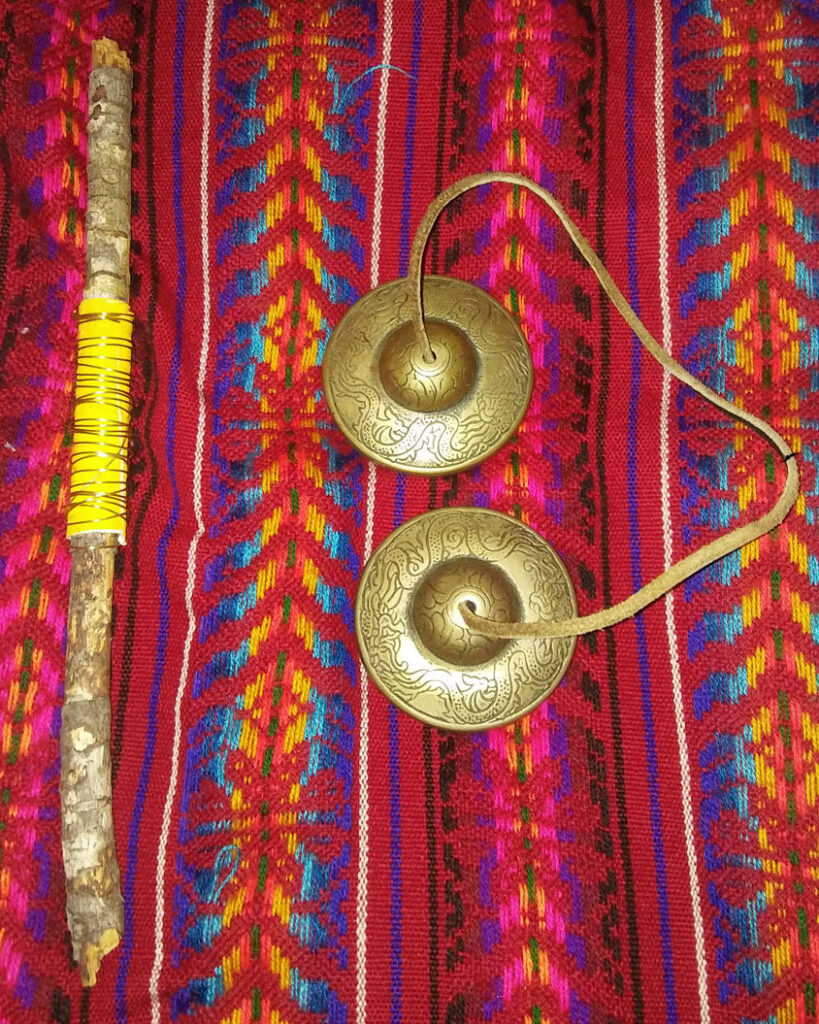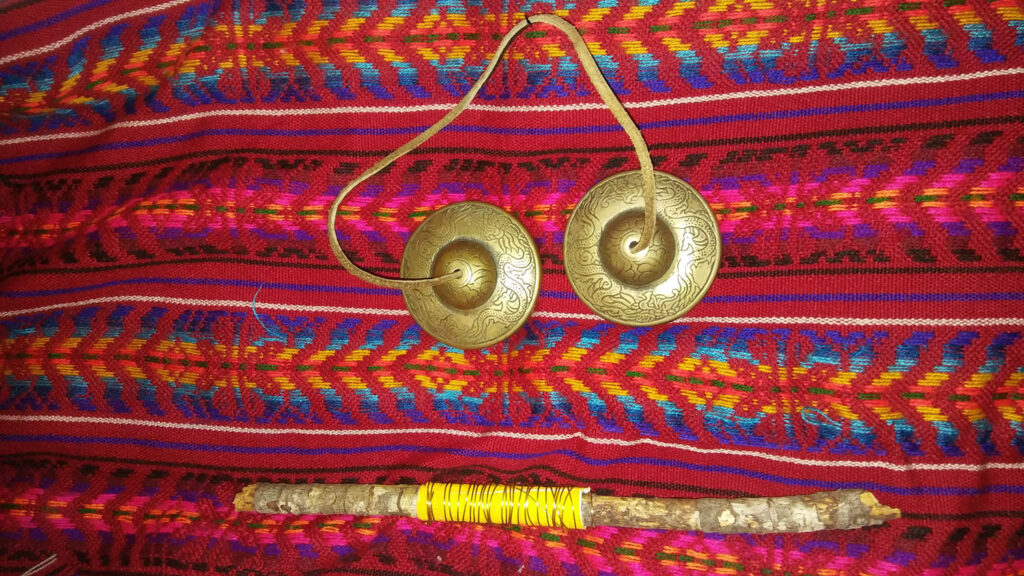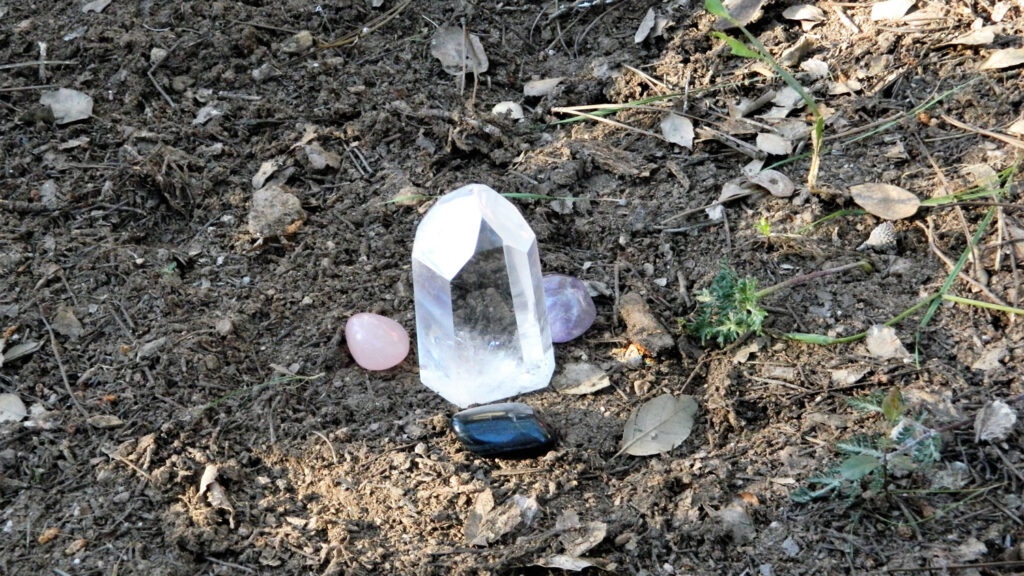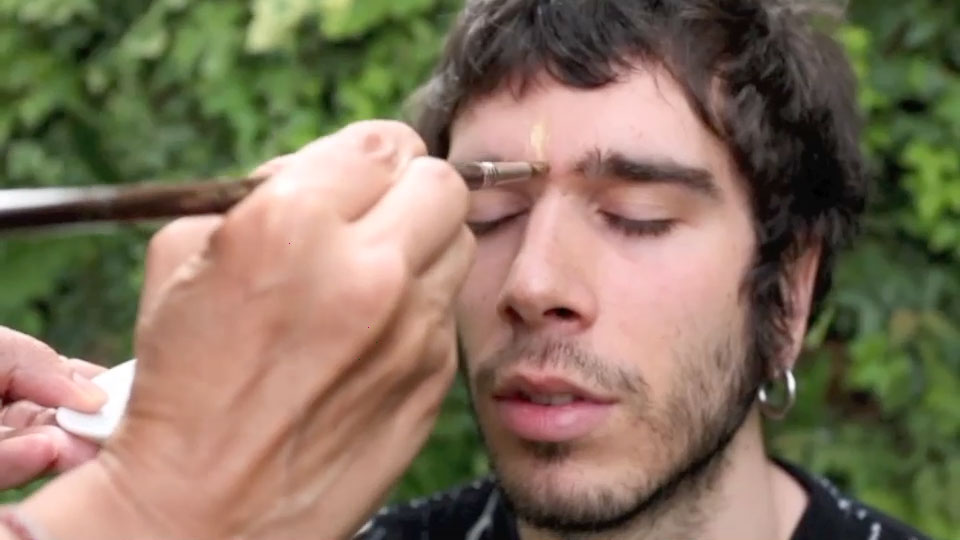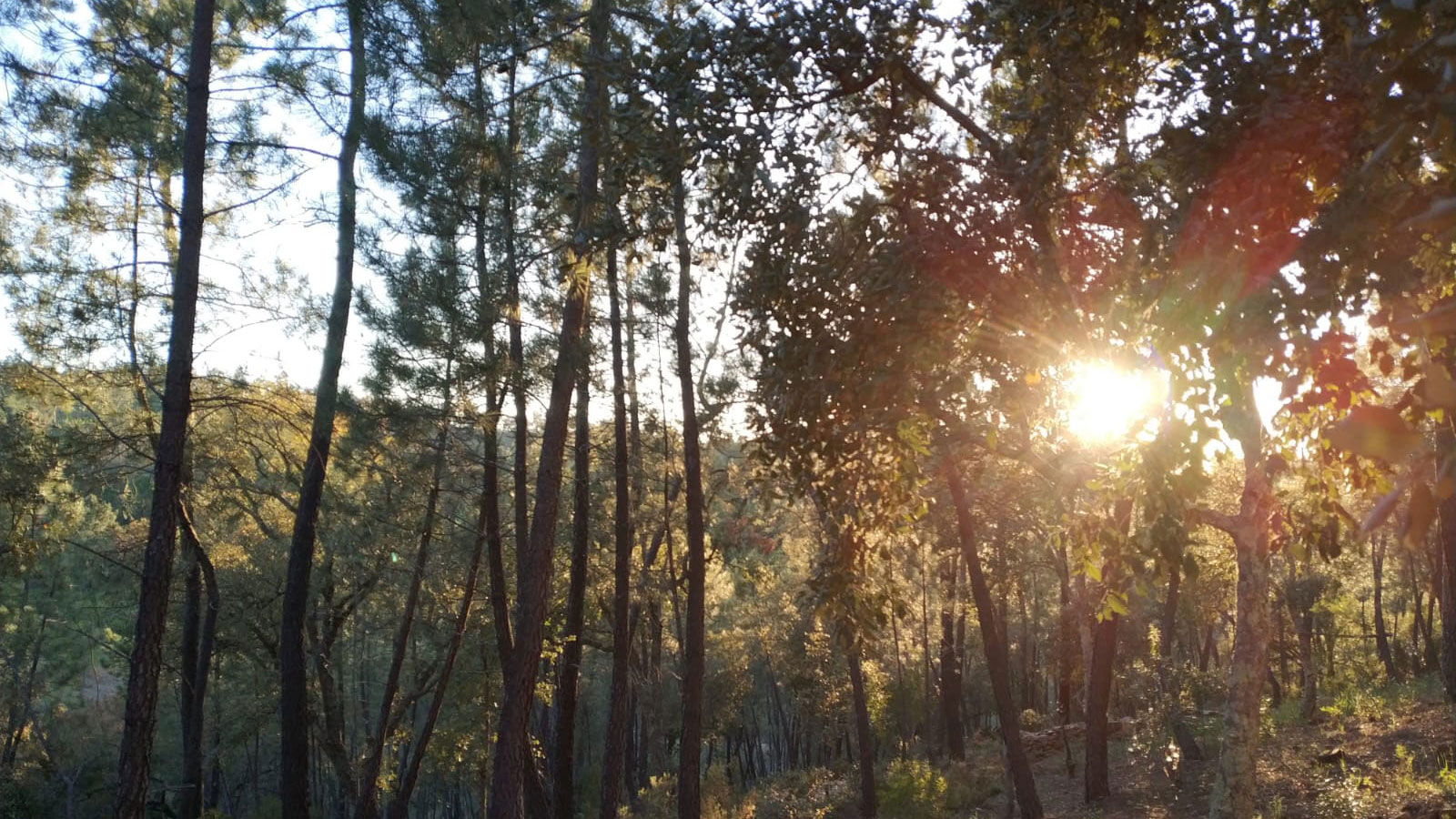
Espacio habitado
Inhabited Space
Matadero.
Madrid, España. 2018.
Valdelarte, Centro de Arte y Naturaleza.
Sierra de Aracena. Huelva, España. 2018.
Perteneciente al proyecto “Ecologismos Femeninos desde el Arte Contemporáneo” coordinado por Verónica Alvarez y participando junto a las artistas Aline Part, Valerie de la Dehesa y Ruth Peche. Uno de los proyectos seleccionados para la Bienal de Mujeres en las Artes Visuales, BMM-2018. La parte teórica se impartió en Matadero, Madrid, y la parte práctica en el Centro De Arte y Naturaleza Valdelarte.
La comunidad, en comunión, desde lo sagrado. Nuestra intimidad entra en comunión con los otros, con lo que nos rodea. El contacto, el respeto a lo que acontece, a lo que nos envuelve, a las necesidades del otro. Espacio como intercambio de intimidad con los demás, que soporta y predispone a que la comunicación suceda. Espacio como espacio sagrado de intercambio.
Acción ritual en el bosque que concibe el espacio interior como espacio sagrado. En un claro del bosque creamos un altar de cuarzos, y nos colocamos en círculo alrededor . Empiezo a guiar una meditación ayudada con el ambiente del bosque y por sonido que toco en directo con Tingsha tibetanos, que ayudan a armonizarnos e integrarnos con la naturaleza. Voy pintando a cada uno de ellos con pigmento de oro en el tercer ojo. Visualizan hacia donde se quieren dirigir. Al terminar la meditación escriben lo que han visualizado, buscan un elemento del bosque al que vincular la intención. Les dejamos pigmentos, papeles, pinceles, y diferentes hilos y alambres de diversos materiales para que puedan construir y materializar una pieza simbolizando y materializando de esta forma la experiencia e intención generada.
Belonging to the project “Ecologismos Femeninos desde el Arte Contemporáneo” coordinated by Verónica Alvarez and participating together with the artists Aline Part, Valerie de la Dehesa and Ruth Peche. One of the projects selected for the Biennial of Women in the Visual Arts, BMM-2018. The theoretical part was taught in Matadero, Madrid, and the practical part in the Centro De Arte y Naturaleza Valdelarte.
The community, in communion, from the sacred. Our intimacy enters into communion with others, with what surrounds us. Contact, respect for what happens, for what surrounds us, for the needs of others. Space as an exchange of intimacy with others, which supports and predisposes communication to happen. Space as a sacred space of exchange.
Ritual action in the forest that conceives the inner space as sacred space. In a clearing in the forest we create a quartz altar, and we stand in a circle around it. I start to guide a meditation helped by the atmosphere of the forest and by the sound I play live with Tibetan Tingsha, which help us to harmonise and integrate with nature. I paint each of them with gold pigment in the third eye. They visualise where they want to go. At the end of the meditation they write down what they have visualised, they look for an element of the forest to link the intention to. We leave them pigments, papers, brushes, and different threads and wires of different materials so that they can build and materialise a piece symbolising and materialising in this way the experience and intention generated.
